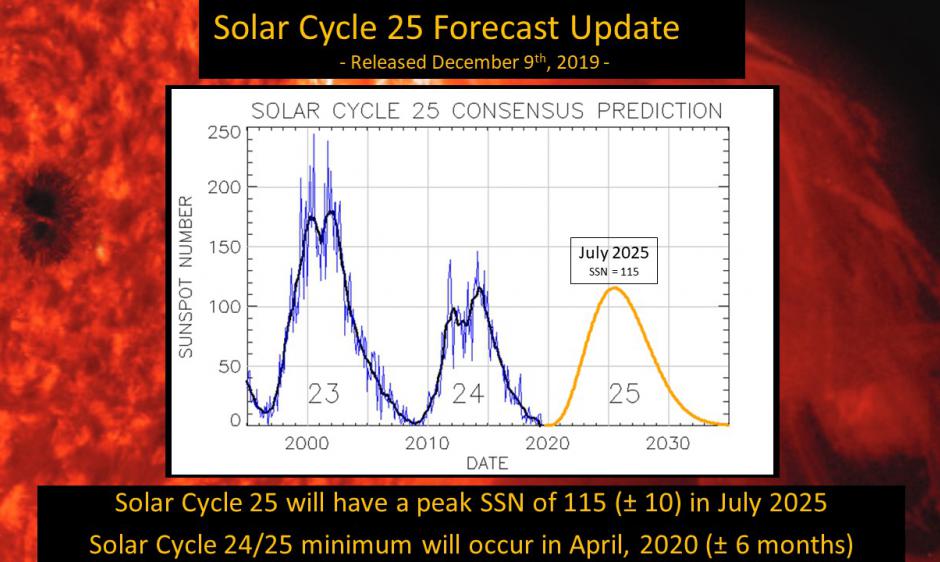Posted by Wayne KE8JFW on January 31, 2020 at 12:44 pm

image/https://www.swpc.noaa.gov/
As we’ve written about before, the Solar Cycle is one of many things about Ham Radio that we wish we had more control over—right up there with our HOA boards and thunderstorms on Field Day.
A lack of solar activity makes working the bands from 14-28 MHz (20 through 10 meters) and 50 MHz (6 meters) a challenge. The amount of sunspots, and correlating solar activity, decreases or increases according to a predictable 11-year cycle. The next solar cycle (the 25th since they were first recorded in 1755) looms ahead as we enter the new year.
As with most things relating to Ham Radio, opinions on what we can expect from Solar Cycle 25 vary widely, so whether operators will be grumbling about a dearth of sunspots or happily filling log books with a ridiculous number of long-distance contacts is yet to be seen. The general belief among the scientific community is that we’re in for another 11 years comparable to the less-than-stellar Solar Cycle 24—and we all know how much everyone enjoyed that.
Published December 9, a report on Solar Cycle 25 from an NOAA/NASA co-chaired, international panel predicted “a peak in July, 2025 (+/- 8 months), with a smoothed sunspot number (SSN) of 115. The panel agreed that Cycle 25 will be average in intensity and similar to Cycle 24. Additionally, the panel concurred that solar minimum between Cycles 24 and 25 will occur in April, 2020 (+/- 6 months). If the solar minimum prediction is correct, this would make Solar Cycle 24 the 7th longest on record (11.4 years).”
Just for fun, we took a look back at predictions for Solar Cycle 24. Some camps predicted it would be the weakest cycle in more than a century; others trumpeted the arrival of one of the most intense cycles on record. A May 2009 article on Spaceweather.com summarized what the experts at NOAA’s Space Weather Prediction center anticipated:
“The panel predicts the upcoming Solar Cycle 24 will peak in May 2013 with a daily sunspot number of 90. If the prediction proves true, Solar Cycle 24 will be the weakest cycle since number 16, which peaked at 78 daily sunspots in 1928, and ninth weakest since the 1750s, when numbered cycles began.”
By 2012—three years into Cycle 24—experts generally agreed that Hams wouldn’t be jumping for joy over what they could expect for the next eight years. And they were right. Solar Cycle 24, which began in December 2008, peaked in April 2014 with a 23-month smooth sunspot cycle of 81.1. In 2019, the sun displayed no visible sunspots for well over 269 days—surpassing the number of blank days in 2008 (268) and making it the quietest sunspot year since 1913.
What lies ahead for Solar Cycle 25? We’ll just have to get on the air and find out for ourselves. And remember, this may be a good opportunity to enjoy the many perks of UHF/VHF operation.
